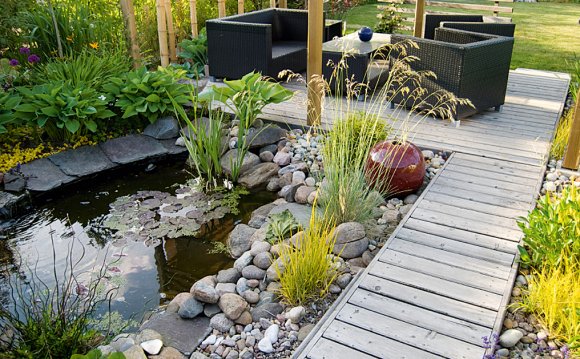

Balance
As you consider balance in landscape design, think of plants and objects in the garden as having visual weight. Some items are tall and square, others are billowing and round. When you have balance in a garden setting, you have equilibrium between all the parts when they're viewed from a particular angle. The balance may seem to disappear when you move to another position in the garden, but it remains. When there's balance, the garden exudes a feeling of harmony and stability.
Imagine a central axis running through the center of the space. Distribute the visual weight of the objects in the planting bed equally on opposite sides of that axis, and you achieve balance.
For instance, if on one side of the planting bed you have a false indigo that is 36 inches tall and wide, you'll want to balance that with something of a similar visual weight on the opposite side. You might use a tuteur with a vine, or even a pair of smaller plants that create a similar bulk, such as aster and lady's mantle. The net effect is that when you step back and view the bed, there's an object on the left with a particular visual weight and it's balanced by an object on the right.
YOU MIGHT ALSO LIKE












